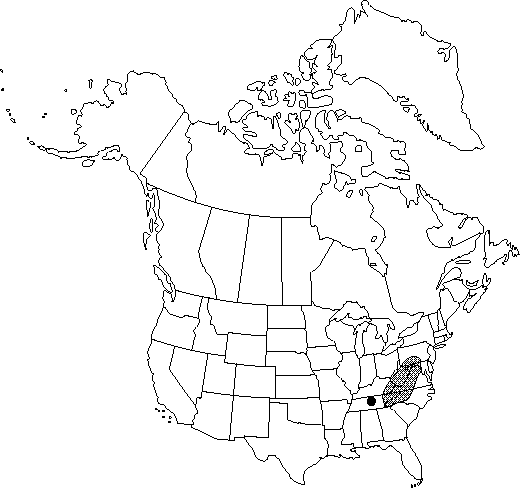Difference between revisions of "Thalictrum coriaceum"
Mem. Torrey Bot. Club 4: 98. 1893.
FNA>Volume Importer |
FNA>Volume Importer |
(No difference)
| |
Revision as of 19:55, 24 September 2019
Roots bright yellow, tuberous. Stems erect, coarse, 65-150 cm, glabrous. Leaves cauline; petioles of proximal leaves well developed, clasping stem, distal leaves sessile or nearly so. Leaf blade 1-4×-ternately compound; leaflets reniform or obovate to orbiculate, apically 3-9-lobed or toothed, 10-75 mm wide, lobe margins crenate, surfaces abaxially glabrous or glandular. Inflorescences panicles, pyramidal, loosely branched, many flowered. Flowers: sepals white to purplish, lanceolate-ovate, 1.5-5.5 mm; filaments maroon, 4-4.5 mm; anthers 2-5.5 mm, apiculate, subulate-tipped; stigma maroon. Achenes 3-15, erect, not reflexed, stipitate; stipe ± wing-angled, 0.7-2.5 mm; body obliquely ovoid to ellipsoid, not laterally compressed, 3-6.5 mm, strongly veined or ribbed, veins not anastomosing; beak 1.5-3 mm.
Phenology: Flowering mid spring–late spring (late May–Jun).
Habitat: Rocky or mesic, open, deciduous woods, thickets, and moist alluvium, chiefly in mountains and piedmont
Elevation: 3-1100 m
Distribution

D.C., Ky., Md., N.C., Pa., Tenn., Va., W.Va.
Discussion
Glandular plants of Thalictrum coriaceum have often been misidentified as T. revolutum despite important differences in the leaflets, the latter having entire rather than crenate lobe margins.
Studies by M. Park and L. Morse (unpubl.) for The Nature Conservancy confirmed that Thalictrum steeleanum is highly variable in all allegedly diagnostic characters and is not distinct from T. coriaceum.
Selected References
None.